- Home
- Adam Nicolson
The Gentry
The Gentry Read online
Adam Nicolson
The Gentry
Stories of the English
For my daughters
Contents
Cover
Title Page
Dedication
Map
Introduction: Ungentle Gentles
Part I: The Inherited World 1410–1520
1410s–1520s
Survival
The Plumptons, Plumpton, Yorkshire
Part II: In the Renaissance State 1520–1610
1520s–1580s
Discretion
The Throckmortons, Coughton, Warwickshire
1580s–1610s
Control
The Thynnes, Oxford, Beaconsfield, Wiltshire, Shropshire and London
Part III: The Great Century 1610–1710
1610s–1650s
Steadiness
The Oglanders, Nunwell, Isle of Wight
1630s–1660s
Withdrawal
The Oxindens, Denton, Kent
1660s–1710s
Honour
The le Neves, Great Witchingham, Norfolk
Part IV: Atlantic Domains 1710–1790
1710s–1750s
Dominance
The Lascelles, Yorkshire, Barbados, Richmond and London
1730s–1790s
Courage
The Pinckneys, Wappoo and Charleston, South Carolina, and Richmond, Surrey
Part V: The Failing Vision 1790–1910
1790s–1840s
Fecklessness
The Capels, London, Brussels and Lausanne
1780s–1910s
Fantasy
The Hugheses, Kinmel, Denbighshire and Grosvenor Square, London
Part VI: The After-Life 1910–2010
1890s–1950s
Renunciation
The Aclands, Killerton, Devon and Holnicote, Somerset
1950s–2010s
Continuity
The Cliffords, Frampton on Severn, Gloucestershire
Conclusion: Return of the Native
Notes
Acknowledgements
Searchable Terms
Other books by Adam Nicolson
Copyright
About the Publisher
INTRODUCTION
Ungentle Gentles
No country has described itself so intimately and for so long as this one. The English have been the great self-recorders and England has preserved more of what its people have written about themselves than anywhere else on earth.1 Inevitably, millions of English men and women have lived with no record of their existence but the writings of the self-recordists – the literate, the scholarly and the litigious, lovers and haters, accountants, manipulators, the worried and the triumphant, the gossips, the distant friends, people separated by business or ambition – have often been kept by their descendants. That is why the English gentry are such an intriguing world to explore: they both wrote and kept, and because of what they kept they are the most knowable English there have ever been. They may well be the most knowable people that have ever lived. Only governments and navies have been so careful about their own past.
Over the six centuries this book covers, the gentry wrote their lives down. Most of their documents, it is true, have disappeared. Often only one side of a correspondence remains. Sometimes a sequence breaks off without explanation. Sometimes there is nothing but the recording, yet again, of the properties owned, the debts incurred, the credit given. Individual families take up tens of shelf-yards with their title deeds. But alongside that, quantities of letters and journals have also found their way to the great public repositories with which this country is blessed: not only the National Archives in Kew and the British Library in St Pancras, but the strings of County Record Offices, all of which are stuffed with heartstoppingly vivid and unregarded treasures.
The people who appear in this book wrote in private and the experience of their words on the written page remains mysteriously private. When you sit at a desk in Exeter or Newport, in Norwich or Bangor, with their words in front of you, there is no discreet mulberry-coloured rope holding you away from them. There is no glass over the pictures, no Please Don’t Touch. The young men and women, the paterfamilias and the desperate nephew, the estate steward and the indigent younger brother, are all there with you in the room. Each letter or journal entry articulates its moment, not only in its words but in its physical form, the hurry or care with which it is written, the sense of politeness or intimacy, or rage. The unfolding of a letter from an envelope always seems to me like the opening of time itself. Nearly always they wrote on beautiful, handmade paper, in now fading brown ink, occasionally in blood, sometimes with a lock of hair folded up in a twist of the paper, once in these stories with the hair glued to the paper with a blob of sealing wax, sometimes in tears, when big blurring puddles have fallen on the ink. In one passage in this book, a grieving father wrote with his own tears, his silvery grey words now scarcely legible on the page.
In part, this book is a journey around that manuscript England, poking about in the national attic, but twinned to paper is another substance just as central to the life of the gentry and in constant dialogue with it: earth. This is a book about land, or at least about the meeting of land and paper. There is nothing mysterious or mystical about this. For most of English history, land was the principal means of production. Land was the national industry. Even as late as 1730,2 three-quarters of the population derived their livelihood from it and half was directly engaged in farming. By 1800 that proportion had dropped to a third, by 1850 to a fifth, by 1900 a tenth, by 1970 a fortieth and by 2000 a hundredth. Our distance from the realities of land is the biggest obstacle we have in empathizing with the past. We no longer have an intuitive understanding of the centrality of the cultivated earth to the life systems of England, land not only as a way of growing food but for the gentry a source of income, in the form of rent, or the sale of produce grown and sold; and as a supremely secure asset, safer than houses. For the seventeenth-century political theorist James Harrington, ‘the Foundation of Property be in Land: but if in Money, lightly come, lightly go’.3
Land was also more than money. On the frontispiece of The English Gentlewoman, Richard Brathwait’s 1631 etiquette book for ladies, his ideal pupil is depicted with a motto floating beside her, saying, ‘Grace my guide, Glory my goale.’ But in The English Gentleman, published the year before, his touchstones are ‘Pes in terris, spes in caelis’ (Feet on the lands, hope in the heavens). Land was the foundation for this life and in some ways a foreshadowing of the life to come. It was the realm through which landowners could extend their presence into a seductive display, a theatre in which they could perform, a playground on which they could take their exercise and a visible, tangible and mouldable anchor in the world of men. Much of this book describes the hyphenated reality of a family-in-a-place, a genetic enterprise based on land which over generations (if you were lucky) was owned, loved, used, made, re-made and, if need be, defended against others. Gentry priorities – for order, settlement and continuity, for visible wellbeing and a hierarchical community of which they were the local summit – could all be read in the landscape, in the field systems, manor houses, gardens, orchards, churches and villages of rural England. These settlements were not arranged on purely ergonomic or financial grounds. They were self-portraits of the families that owned them. Gentry landscape was autobiography in earth.
England is covered with these deeply symbolic gentry places and they form the counterpart to the privacy of the manuscripts. Landscape was the gentry face; archives the gentry heart. Many houses do survive, often with the parish churches next to them, with the gentry tombs in their own chapels at the east end, often beautiful and highly articulate memorials to a forgo
tten ideology. But gentry existence was less well funded and more vulnerable to change and failure than that of the great aristocrats and so their houses and the surrounding skirts of landscape do not always survive intact. I have walked the lands of all the families in this book4 and it is a poignant pleasure to beat your way through an overgrown wood, or to walk across the stubble of a just-harvested wheatfield to find nothing but a soggy hollow, or a single ivy-bearded wall, while knowing in the most intimate detail from their papers the events that occurred there three, four or five centuries before. Whole destinies unfolded where now there are only a few crabbed trees or the lingering aftersmell of fox.
Reality is intimate and rather than attempt a heroic and Olympian survey of the whole gentry world, I have taken a sequence of twelve individual gentry families, each at a particular crisis in their lives. I have chosen them only if they were richly articulate about themselves, and if their archives have somehow survived. Although there are oceans of ordinariness here, each family is not quite ordinary; each throws a slightly different sidelight on to the gentry phenomenon. Their lives are highly individual but I have lined them up, like a series of organ pipes, to make a history of England over the last six hundred years, variations on the same tune played across six centuries.
Each family has fifty-odd years in the spotlight, usually an arc of three generations: parents, the protagonists and their children. Some of the histories overlap with others, some cover longer time-spans, but nearly all are lessons in survival: how to keep going when the world wants to do you down; how to make the best of the opportunities that are on offer; how to manipulate others; how to make government and the law work in your favour; how to resist or destroy your enemies. One or two are lessons in defeat: how to get it wrong, what happens when resolution fails, or more importantly, when a family loses its grip on the nature of reality. Together, they are, in effect, a self-portrait of England, or at least of its central and culture-forming class. The people in this book are neither the poor nor the great grandees of the country, but the responsive and continuous middle of Englishness.
I have often thought that the twelve leading gents described here could have sat down to dinner together and not felt they were in alien company. Some would have been charming or gawky, some a little graceless and domineering, one or two quite garrulous, but none would have felt that the other people around the table would not have understood them. The gentry as they first appear in their letters in the late Middle Ages are astonishingly like the gentry as they slide on into the twenty-first century. Each would have known the same places and have been able to discuss the ever-reliable standbys of hunting, shooting, fishing, farming, cattle, politics, money, God and dogs. All of these run through this book as the background music, the noise you hear in gentry life when nothing else is going on. And although I did not choose them for this reason, but gathered them as a set of emblematic figures, it turns out, needless to say, that through family connections they would all have known each other, even if a little remotely.
I have scattered them quite deliberately all over England and parts of the English-speaking world, and so this connectedness is not about a local cousinage or a county community. Every one of these families had important London – or usually Westminster – connections. And although their own local countries mattered to them, none from the very beginning was constrained by the boundaries of the places they owned. Even as they emerged in the late Middle Ages, this was a class with local roots but a national perspective. And if this all sounds like the introductory chat at an upper-middle-class dinner party – how did you get here, who do you know, how is Aletheia? – that is probably a true impression. At one level, this book is about networking.
But who were they? The gentry net spreads across space and time but what defined them as gentry? That is an unavoidable question but definition and the gentry have stalked each other a little warily for at least six hundred years. What was the frame in which these families were trying to make their way in the world? What was their role in the making of England? And what made them what they were?
Those questions interlock but at the core of the gentry story is a subtle and particular ripple in the status of the English nobility which from the fourteenth century onwards distinguished England from the rest of Europe. The idea of gentility, of a particular class of propertied and cultivated people, distinct from what the unashamed Richard Brathwait in the seventeenth century would call ‘the bleere-ey’d Vulgar’, was not exclusively English. It was common to most parts of western and southern Europe in the Middle Ages. France and Burgundy were the heart of it and the arbiters of its standards of behaviour. Elegance, courtliness, poetry and architecture all came from there.
Gentleness, in that sense, was French and England was part of this French culture-province, but an English difference emerged towards the end of the fourteenth century, when a powerful English crown established the ability to appoint peers by writ or summons to Parliament. The peers were part of the government of England not by right but by royal invitation or instruction. Those barons and other peers constituted the tiniest possible minority, about sixty men out of a total of about three million in the late fourteenth century. This crown-imposed distinction between the noble and non-noble had profound effects on those people whose social and economic standing came just below them. Those ‘gentry’ – the word is related to ‘gene’ and means essentially ‘people of good breeding’ – were not considered noble. They were gentlemen and gentlewomen, were often related to and intermarried with the nobility, but were not noble themselves. They were members of the Commons.
The House of Commons was where they gathered, openly distinct from their cousins, uncles and fathers who were in the House of Lords next door. And so the gentry occupied a richly ambivalent position, as members of the governing class but with no visible boundary between them and the people immediately below them, socially and economically. They were continuous with both the yeomen – independent, freeholding farmers – and the merchants and traders of the late medieval cities. Neither merchant nor yeoman had claim to much education, lineage, a coat of arms or a part in government, local or national, but they were not in any way distinct from the gentry in terms of the law.
This deep structure meant that the English gentry were open at both ends: sharing a French culture of courtesy, chivalry and knightliness with the nobility above them; entirely accessible to the English world of the yeomen and the growing urban middle class below them. Both the upper and lower boundaries of the gentry were, as the modern historians Felicity Heal and Clive Holmes have said, ‘permeable membranes’.5
The openness was surprisingly radical. The English gentry did not, for example, need to own land. From the fourteenth century onwards, merchants from the City of London were given knighthoods, the ultimate signal of high gentry status. Medieval lawyers were considered gentry, as were the upper clergy. High royal officials were gentry by virtue of their office. You could marry into the gentry and become a member, become a city alderman and be considered gentry, thrive in the law, inherit money, become a university don or medical doctor: all qualified the individual to be considered a member of this class. In 1434, the military theorist Nicholas Upton calmly accepted that ‘in thys days openly we se how many poor men by theyr grace, favour, labour or deserving’ had become gentlemen.6 Engaging in business or in entrepreneurial developments of docks, harbours, roads, canals and markets, opening mines and quarries, developing land, investing in overseas trade, becoming a partner in any kind of business from sheep transport to hansom cabs: none of this disqualified a man or woman from the gentry. Sir John Fastolf, the fifteenth-century Norfolk gentleman whose name Shakespeare borrowed for his fat, drunk, cowardly and mendacious knight, was in fact an ex-soldier who bought himself a pub in Southwark (the Boar’s Head, which may be why Shakespeare chose him) and ran a shipping line taking Norfolk pork to European markets. As the central organ of the English body politic, the gentry from its origins
was flexible, founded on the principle that its members were adapting and adjusting to changing circumstances. No revolution was required for this to happen. This flexible class lay at the foundations of English culture and its long history of liberty and independence.
Younger children of the nobility sank into the gentry and younger children of the gentry sank into the urban middle class. This threat of failure, of losing the status into which you had been born, recurs in this book as one of the central motivators of the gentry class. A gentleman whose status was not guaranteed was necessarily active, engaged with the world, adaptive and open to change. Any exaggerated respect for the past and your lineage was an inflexibility that would threaten your fortunes.7
This is the mirror image of the modern English idea of a gentleman as someone to whom dignity and a ramrod morality were the foundations of his life. But the long career of the English in the world is not explicable if stiffness was their governing characteristic. One member of the gentry after another in this book recognized that openness was the key and when travelling abroad they noticed the difference in social structure. The situation in France and Italy, Thomas Fuller, the church historian, wrote in the mid-seventeenth century, was ‘like a die which hath no points between cinque and ace – nobility and peasantry’. In England, he went on, ‘the temple of honour is bolted against none who have passed through the temple of virtue’.8 England was a place which could congratulate itself on allowing high social standing to anyone who qualified for it through his achievements or education, and through his qualities as a person, not what his ancestry said he was.

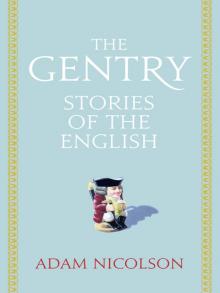 The Gentry
The Gentry Why Homer Matters
Why Homer Matters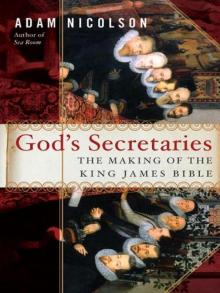 God's Secretaries_The Making of the King James Bible
God's Secretaries_The Making of the King James Bible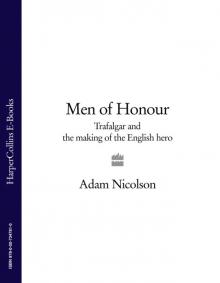 Men of Honour
Men of Honour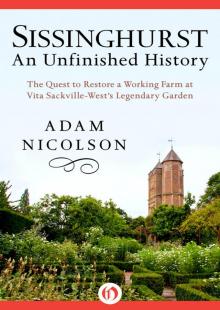 Sissinghurst, an Unfinished History
Sissinghurst, an Unfinished History Smell of Summer Grass
Smell of Summer Grass Sea Room
Sea Room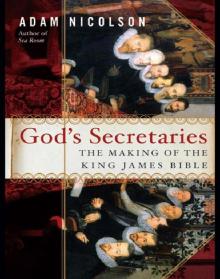 God's Secretaries
God's Secretaries Atlantic Britain
Atlantic Britain